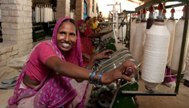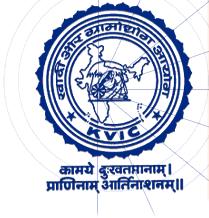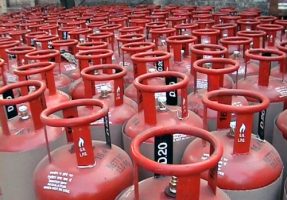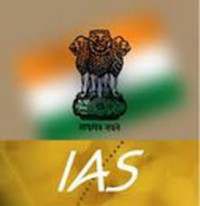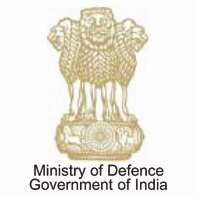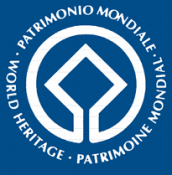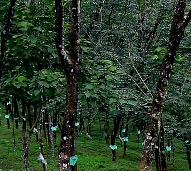- The Cabinet has approved the “Stand Up India Scheme” to promote entrepreneurship among Scheduled Caste/Schedule Tribe and Women.
- The schemes provides for composite loans by banks between Rs. 10 lakh and upto Rs. 100 lakh for setting up a new enterprise in the non-farm sector. These loans would be eligible for refinance and credit guarantee cover.
- A credit guarantee fund of Rs. 5,000 crore for providing guarantee cover for loans under Stand Up India in next five years has been approved. Provision of initial capital of Rs. 500 crore to the corpus in FY 2016-17 has been made.
Approval of Stand up Scheme
Newly identified immunity pathway protects mammals from virus-caused cancer
Summary:Building upon earlier research, investigators have identified a new innate immunity pathway that protects mammals from viral oncogenesis, the process by which viruses cause normal cells to become cancerous.
Building upon earlier research, investigators at UT Southwestern Medical Center and their collaborators have identified a new innate immunity pathway that protects mammals from viral oncogenesis, the process by which viruses cause normal cells to become cancerous.
Given the prevalence of virus-related cancers in humans, the discovery is significant — and could eventually contribute to development of new cancer therapies. The findings were published recently in Proceedings of the National Academy of Sciences.
“More than 20 percent of human cancers — as well as a number of other diseases — are linked to chronic viral infections,” said first author Dr. Xiaonan Dong, an Instructor in Internal Medicine at UT Southwestern’s Center for Autophagy Research. The Center is led by Dr. Beth Levine, also Professor of Internal Medicine and a Howard Hughes Medical Institute Investigator at UT Southwestern.
This study revealed that the autophagy-related protein beclin 2 — also discovered by Dr. Levine’s team — can help break down the key oncogenic viral protein associated with Kaposi’s sarcoma, a type of cancer most commonly found in people with HIV infection or transplant-related suppression of their immune systems.
Autophagy is a cellular “housekeeping” process in which the body’s cells destroy damaged proteins and organelles. Researchers in Dr. Levine’s lab study the genes involved in this cellular recycling process and their roles in cancer, aging, infections, and neurodegenerative diseases. The present study revealed that, in addition to mediating autophagy, beclin 2 is also involved in a novel immune pathway that suppresses viral infection and virus-caused cancer.
“We found that beclin 2 can promote the degradation of Kaposi’s sarcoma-associated herpesvirus G protein-coupled receptor (GPCR), and thereby suppress its cancer-causing signaling,” said Dr. Dong. “Transgenic mice deficient in beclin 2 are more prone to viral GPCR-driven oncogenesis that resembles human Kaposi’s sarcoma.”
More specifically, researchers found that increased beclin 2 expression accelerated degradation of viral GPCR and decreased pro-tumorigenic signaling, whereas decreased beclin 2 expression led to sustained levels of viral GPCR and enhanced pro-tumorigenic signaling. This response is part of an endolysolomal trafficking process in which microbes and their constituent proteins are delivered to enzyme-filled cellular components called lysosomes.
Kaposi’s sarcoma, which can affect the skin and internal organs, occurs in about 6 cases per million people each year in the U.S., according to the American Cancer Society. It is most often seen in people infected with HIV, but also has an incidence of about 1 in 200 transplant patients.
“These findings deepen understanding of the mechanisms that our immune system uses to protect against cancer and potentially against other serious diseases caused by pathogenic viral proteins,” said Dr. Levine, who holds the Charles Cameron Sprague Distinguished Chair in Biomedical Science. “They may contribute to the identification and development of novel therapeutic targets and antiviral therapies.”
Other UT Southwestern researchers who contributed to the study were Adam Cheng, research technician; Zhongju Zou, research specialist; Yih-Sheng Yang, research scientist; Dr. Rhea M. Sumpter, Instructor in Internal Medicine; and Dr. Chou-Long Huang, Professor of Internal Medicine and holder of the Ruth W. and Milton P. Levy, Sr. Chair in Molecular Nephrology, and the Jacob Lemann, M.D. Professorship in Calcium Transport. Researchers from Columbia University, Washington University, and the Icahn School of Medicine at Mount Sinai also contributed.
Source:UT Southwestern Medical Center(science)
Promotion of Khadi
Minister of State, Micro, Small and Medium Enterprises, Shri Giriraj Singh has informed that Khadi and Village Industries Commission has been re-established vide Notification No.A-43013/6/2015-KVI-P dated 26th October 2015 with an objective to promote, facilitate and assist in establishment and development of Khadi and Village Industries in rural areas.
Khadi is already an international brand. KVIC has been granted Deemed Export Promotion Council status since December 2006. 1018 Khadi and Village Industries (KVI) Institutions are registered as members. However, most of the exports are through merchant exporters and not directly by KVI units. 5% of the Free On Board (FOB) value or Rs.10 lakh, whichever is less, is provided as incentive for KVI units which undertake Direct Exports. In addition, KVIC encourages Khadi, Village Industries to participate in International Trade Fair/ Exhibitions by subsidizing 75% of the Air fare and 50% of stall rent to augment export of their products in general subject to maximum limit of Rs.1.25 lakh each. In case of Women entrepreneurs & institutions/ST/SC/NE States, air fare and stall rent extended to the extent of 100% subject to maximum limit of Rs.1.25 lakh each. Government in the Ministry of Micro Small & Medium Enterprises is implementing a number of schemes for the holistic development and promotion of khadi which include:
(i) Strengthening of Infrastructure of existing Weak Khadi Institutions and Assistance for Marketing Infrastructure provides for renovation of khadi sales outlets and providing assistance for strengthening of infrastructure.
(ii) Market Promotion and Development Assistance under which assistance is provided @ 30% of prime cost of cost to be shared among artisans, producing and selling institutions in the ratio of 40:20:40.
(iii)Interest Subsidy Eligibility Certification scheme for providing bank loans for khadi and polyvastra at 4% rate of interest.
(iv)Workshed Scheme for khadi artisans for providing assistance for construction of worksheds.
(v)Scheme of Fund for Regeneration of Traditional Industries (SFURTI) under which assistance for replacement of obsolete equipments, setting up common facility centres, product development, market promotion and other support is provided in clusters of traditional industries including khadi industries. Under the scheme 71 such clusters are to be set up during XII Plan period. 26 clusters have been given final approval for establishment so far.
(vi)Khadi Reforms and Development Programme (KRDP) to revitalize the khadi sector with enhanced sustainability of khadi, increased incomes and employment for spinners and weavers, increased artisans welfare and to achieve synergy with village industries is being implemented.
The State/UT wise details of 11.27 lakh workers are given is:
Number of Khadi workers State/UTwise
| Sl.No. | State | No. of workers |
| 1 | Jammu & Kashmir | 0.25 |
| 2 | Himachal Pradesh | 0.08 |
| 3 | Punjab | 0.45 |
| 4 | UT Chandigarh | 0 |
| 5 | Haryana | 0.52 |
| 6 | Delhi | 0.04 |
| 7 | Rajasthan | 0.86 |
| 8 | Uttarakhand | 0.41 |
| 9 | Uttar Pradesh | 4.17 |
| 10 | Chhattisgarh | 0.08 |
| 11 | Madhya Pradesh | 0.07 |
| 12 | North-East(Assam-15956; Arunachal-87; Nagaland-2051; Manipur-370; Mizoram-0; Tripura-445; Meghalaya-91) | 0.19 |
| 13 | Bihar | 1.1 |
| 14 | West Bengal | 1.06 |
| 15 | Jharkhand | 0.04 |
| 16 | Odisha | 0.04 |
| 17 | Gujarat | 0.4 |
| 18 | Maharashtra | 0.03 |
| 19 | Goa | 0 |
| 20 | Andhra Pradesh / Telangana | 0.33 |
| 21 | Karnataka | 0.41 |
| 22 | Kerala | 0.19 |
| 23 | Tamil Nadu | 0.55 |
| 24 | Pondicherry | 0 |
| Grand Total | 11.27 |
Market Promotion and Development Assistance aims to increase the earnings of Khadi workers. Under the scheme khadi artisans will be given market development assistance at 30% of prime cost to be shared among artisans, producing and selling institutions in the ratio of 40:20:40. The share of the artisan is enhanced from earlier 25% to 40%. This benefit will be transferred directly in the accounts of the khadi artisans.
KVIC is taking various steps to promote khadi by tying up with e-commerce portals, big malls etc. to promote khadi and increase its sale. It is making and selling new designer ready to wear clothes focused on youth like Khadi Denim, Khadi T-shirts. Trade Fairs/Exhibitions are being organized at District/State/ National level for promotion of Khadi.
Approval to provide free LPG connections to Women from BPL Households
- Cabinet Committee on Economic Affairs has approved Pradhan Mantri Ujjwala Yojana – Scheme for Providing Free LPG connections to Women from BPL Households. Under the scheme, Rs 8000 crore has been earmarked for providing five crore LPG connections to BPL households.
- The Scheme provides a financial support of Rs 1600 for each LPG connection to the BPL households.The identification of eligible BPL families will be made in consultation with the State Governments and the Union Territories. This Scheme would be implemented over three years, namely, the FY 2016-17, 2017-18 and 2018-19.
- This is the first time in the history of the country that the Ministry of Petroleum and Natural Gas would implement a welfare scheme benefitting crores of women belonging to the poorest households.
First case of Acute Myelitis in patient infected with Zika Virus
Summary:A first case of acute myelitis following infection with Zika virus has been reported for the first time. A young patient in the acute phase of an infection by Zika virus presented motor deficiency in the four limbs, associated with very intense pain and acute urinary retention.
A first case of acute myelitis following infection with Zika virus has been reported for the first time by a research team from Inserm Unit 1127 Brain and Spinal Cord Institute (Inserm/CNRS/Sorbonne University) and neurologists at Pointe-à-Pitre University Hospital and the University of the Antilles. A young patient in the acute phase of an infection by Zika virus presented motor deficiency in the 4 limbs, associated with very intense pain and acute urinary retention. The presence of the virus was confirmed in the cerebrospinal fluid, blood and urine.
In January 2016, a 15-year old girl was admitted to the Pointe-à-Pitre University Hospital in Guadeloupe, with left-side hemiplegia. The girl showed urinary retention on her second day in hospital. The left-side hemiplegia and pain became worse and the doctors recorded a loss of sensation in the legs.
The researchers detected high concentrations of Zika virus in the serum and cerebrospinal fluid on the second day after admission (9 days after the symptoms began). Tests for shingles, chickenpox, herpes virus, legionellosis and mycoplasma pneumonia were negative.
The patient was treated with methylprednisolone (1 g), an anti-inflammatory drug, from the first day and daily for 5 days. Seven days after admission, her neurological condition had improved. At present, the patient is still in hospital but she is out of danger. She has signs of moderate weakness in both legs but is walking unaided again.
For the researchers, “this case strengths the hypothesis regarding the neurotropic nature of the Zika virus. It highlights the existence of neurological complications in the acute phase of the infection, while Guillain Barré syndromes are post-infectious complications. Furthermore, this is a single case. Future studies will be needed.”
Source:INSERM(science)
Sanjay Kumar given additional charge of Special Commissioner-Transport
Shri Sanjay Kumar IAS (AGMUT 2008) presently posted as Commissioner (Excise) with additional charge of Deputy Commissioner (New Delhi) has been given the additional charge of Special Commissioner (Transport).
IndianBureaucracy.com wishes Shri Kumar the very best .
Government trying to bring down Import of Defence Equipment
Efforts are being made to bring down the import of defence equipment, promoting manufacturing either by Indian manufacturers or foreign companies in the country under Make in India programme, Defence Minister Shri Manohar Parrikar has said that imports were 52.47 per cent of the total acquisitions (Rs 66850.30 crore) in 2013-14 was brought down to 38.1 per cent in 2014-15 and is targeted to be brought down to 30 per cent by next two years.He said defence asset, capital procurements flow from the defence procurement planning process comprising 15-year long term integrated perspective plan (LTIPP), five-year service capital acquisition plan (SCAP) and annual acquisition plan (AAP).
Presently, LTIPP 2012 to 2027 is in vogue, the Minister added.Responding to another question, Mr Parrikar said manufacturing facilities in defence shipyards are working in full capacity and they have supplied orders of Rs 1.5 lakh crore which would take almost 15 years to comply with supply.On budgetary allocations, the Minister said in 2015-16, defence budget was Rs 6,011.06 crore on revenue head and Rs 6,480.15 crore on capital head that has now been proposed at Rs 6728.05 crore and Rs 6,865.73crore for 2016-17.UNI SS SW 1248
Policy to adopt World Heritage Sites
Minister of State for Culture and Tourism (Independent Charge) and Minister of State for Civil Aviation Dr. Mahesh Sharma has informed that. UNESCO, with the help of 21 member World Heritage Committee and advisory bodies such as International Council on Monuments and Sites (ICOMOS) and International Union for Conservation of Nature (IUCN), within the framework of its Operational Guidelines, decides about the cultural and natural sites to be included on the World Heritage list. Such cultural and natural sites must display the necessary Outstanding Universal Value (OUV), fulfill one or more out of 10 prescribed criteria (as given below), maintain the condition of authenticity and integrity and should be in a good state of conservation.
At times, concerns are raised by the World Heritage Centre during inscription process those relate to the state of conservation or its management (including that of its buffer). State party addresses such concerns by giving necessary commitment to effectively manage the site and its buffer, thus safeguarding its Outstanding Universal Value (OUV).
Criteria for the assessment of Outstanding Universal Value (OUV) as per UNESCO’s Operational Guidelines:-
- to represent a masterpiece of human creative genius;
- to exhibit an important interchange of human values, over a span of time or within a cultural area of the world, on developments in architecture or technology, monumental arts, town-planning or landscape design;
- to bear a unique or at least exceptional testimony to a cultural tradition or to a civilization which is living or which has disappeared;
- to be an outstanding example of a type of building, architectural or technological ensemble or landscape which illustrates (a) significant stage(s) in human history;
- to be an outstanding example of a traditional human settlement, land-use, or sea-use which is representative of a culture (or cultures), or human interaction with the environment especially when it has become vulnerable under the impact of irreversible change;
- to be directly or tangibly associated with events or living traditions, with ideas, or with beliefs, with artistic and literary works of outstanding universal significance. (The Committee considers that this criterion should preferably be used in conjunction with other criteria.
- to contain superlative natural phenomena or areas of exceptional natural beauty and aesthetic importance;
- to be outstanding examples representing major stages of earth’s history, including the record of life, significant on-going geological processes in the development of landforms, or significant geomorphic or physiographic features;
- to be outstanding examples representing significant on-going ecological and biological processes in the evolution and development of terrestrial, fresh water, coastal and marine ecosystems and communities of plants and animals;
- to contain the most important and significant natural habitats for in-situ conservation of biological diversity, including those containing threatened species of outstanding universal value from the point of view of science or conservation.
There are 32 sites from India declared as World Heritage properties as follows.
CULTURAL SITES
(Under Protection of Archaeological Survey of India)
| S.No | Name of Site | State |
| 1. | Ajanta Caves (1983) | Maharashtra |
| 2. | Ellora Caves (1983) | Maharashtra |
| 3. | Agra Fort (1983) | Uttar Pradesh |
| 4. | Taj Mahal (1983) | Uttar Pradesh |
| 5. | Sun Temple, Konarak (1984) | Odisha |
| 6. | Group of Monuments at Mahabalipuram (1984) | Tamil Nadu |
| 7. | Churches and Convents of Goa (1986) | Goa |
| 8. | Group of Temples, Khajuraho (1986) | Madhya Pradesh |
| 9. | Group of Monuments at Hampi (1986) | Karnataka |
| 10. | Group of Monuments, FatehpurSikri (1986) | Uttar Pradesh |
| 11. | Group of Temples, Pattadakal (1987) | Karnataka |
| 12. | Elephanta Caves ( 1987) | Maharashtra |
| 13. | Great Living Chola temples at Thanjavur, Gangaikondacholapuram and Darasuram (1987 & 2004) | Tamil Nadu |
| 14. | Buddhist Monuments at Sanchi (1989) | Madhya Pradesh |
| 15. | Humayun’s Tomb, Delhi (1993) | Delhi |
| 16. | Qutb Minar Complex, Delhi (1993) | Delhi |
| 17. | Prehistoric Rock Shelters of Bhimbetka (2003) | Madhya Pradesh |
| 18. | Champaner-Pavagarh Archaeological Park (2004) | Gujarat |
| 19. | Red Fort Complex, Delhi (2007) | Delhi |
| 20. | Hill Forts of Rajasthan(Chittaurgarh, Kumbhalgarh, Jaisalmer and Ranthambhore, Amber and Gagron Forts) (2013)
(Amber and Gagron Forts are under protection of Rajasthan State Archaeology and Museums) |
Rajasthan |
| 21. | Rani ki Vav (2014) | Gujarat |
Under Protection of Ministry of Railways
| 22. | Mountain Railway of India ( Darjeeling,1999), Nilgiri (2005), Kalka-Shimla(2008) | West Bengal, Tamil Nadu, Himachal Pradesh |
| 23. | Chhatrapati Shivaji Terminus (formerly Victoria Terminus) (2004) | Maharashtra |
Under Protection of Bodhgaya Temple Management Committee
| 24. | Mahabodhi Temple, Bodhgaya (2002) | Bihar |
Under Protection of Rajasthan State Archaeology and Museums Department
| 25. | Jantar Mantar, Jaipur (2010) | Rajasthan |
NATURAL SITES
Under Protection of Ministry of Environment & Forest
| 26. | Kaziranga National Park (1985) | Assam |
| 27. | Manas Wild Life Sanctuary (1985) | Assam |
| 28. | Keoladeo National Park (1985) | Rajasthan |
| 29. | Sunderban National Park (1987) | West Bengal |
| 30. | Nanda Devi and Valley of Flowers National Parks (1988, 2005) | Uttarakhand |
| 31. | Western Ghats (2012) | Karnataka, Kerala, Maharashtra,Tamil Nadu |
| 32. | Great Himalayan National Park (2014) | Himachal Pradesh |
Tax Incentives for the Maritime Sector
The Government of India has proposed the following tax incentives in the Budget 2016-17 for strengthening and promoting the Indian maritime sector
(i)Exclusion of services of transportation of import cargo by ships on voyage charter from Negative List.
Freight charged by shipping companies for import of goods into India has been excluded from the Negative List and permitted availment of CENVAT credit on inputs used for providing such service. This will bridge the competitive gap between Indian and foreign shipping lines in the taxation sphere.This positive change puts India on par with the major progressive maritime jurisdictions, which already give full credit of taxes paid on inputs used for import cargo.
(ii)Zero rating of services of transportation of export cargo by Indian ships.
The transport service for export of cargo was not being treated as export and CENVAT credit was also not available for export of goods, which made the service costlier for Indian flag ships.It has now been proposed that the services provided by Indian shipping lines by way of transportation of goods by a vessel to outside India shall be zero rated with effect from March 1, 2016 along with the availability of CENVAT credit for inputs used in providing the service. This will reduce transportation cost and put India at par with the major progressive maritime jurisdictions which have zero rates of taxation on maritime services and also provide full credit of taxes paid on inputs used in the maritime services.
(iii)Reduction of service tax incidence on coastal shipping.
Realizing the need for encouraging transportation of goods through coastal shipping rather than road or rail, the Government, in the Union Budget 2015-2016, had brought the abatement of service tax at par with road and rail i.e. 70%. However, due to lack of CENVAT credit on inputs used in the service in case the benefit of abatement is availed, the shipping companies were not able to provide services to the customers at lower costs.In the present budget, the Government has rectified this anomaly and allowed shipping companies to charge service tax at abated rate on freight income and avail CENVAT credit on input services.
(iv) Reduction of Central Excise duty on capital goods, raw materials and spares used for repair of ocean going vessels.
This would reduce the material cost used for repair of the ocean going vessels by 4%, if domestically procured.This amendment also permits the shipyards to procure capital goods for ship repair of ocean going vessels at NIL rate of duty as against the existing 12.5%.With the proposed amendment, cost of ship repair and dry-docking in India will reduce.
(v)Simplification of procedure to avail Customs and Central Excise duty exemption on procurement of goods for shipbuilding and ship repair.
The procedure for procuring goods at concessional/NIL rate of Central Excise and Customs duty for the ship building and ship repair has been considerably streamlined. The new procedure only requires intimation to be sent to the Excise Department instead of their approval for procuring goods at a concessional/NILrate.This would enable the ease of doing business.
(vi)Rationalization of Interest rates on delayed payments of all indirect taxes.
It is felt that lower interest rates will reduce fiscal burden of maritime sector.
- Further, in order to provide the Indian shipping industry a level playing field and make it competitive at international level, the government has earlier implemented certain policies as mentioned below:
(i).Infrastructure status for shipyards.
The Institutional Mechanism on Infrastructurehas on December 21, 2015 recommended inclusion of shipyards undertaking shipbuilding and ship-repair under the Harmonized List of Infrastructure sectors.
(ii)Financial assistance and eligibility support for Indian shipyards.
The Government has on December 9, 2015 approved Financial Assistance Policy for Indian shipyards for ten years commencing from April 1, 2016. Government has also approved that all government departments or agencies including CPSUs have to provide Right of First Refusal to Indian shipyards while procuring or repairing vessels.
(iii)Parity between indigenously built ships and imported ships.
Government has on November 24, 2015 exempted Customs and Central Excise duty on inputs used in manufacture of ships to provide a level playing field between indigenously built ships vis-à-vis imported ships.
(iv)Ease of Doing Business for Indian shipyards.
Government has on November 24, 2015 relaxed the limitation to operate shipyards under customs control under Section 65 of the Customs Act, 1962 to avail duty free imports or domestic procurement of inputs used in shipbuilding.
(v)Boost to movement of containerised cargo through coastal route.
Government has on September 17, 2015, exempted Customs and Central Excise duty leviable on bunker fuels, namely IFO 180 CST and IFO 380 CST, used in Indian flag vessels carrying a mix of EXIM, empty and domestic containers between two ports in India.This tax incentive will reduce operational costs of coastal transportation and will encourage growth of Indian tonnage as well as promote development of transhipment hub in India.
(vi)Boost availability of special vessels in Indian market.
In order to promote Coastal Shipping and decongesting roads and railways Inland water transportation, Government has, on September 2, 2015, relaxed cabotage for special vessels such as Roll-On Roll-Off (Ro-Ro), Hybrid Roll-On Roll-Off (Hybrid Ro-Ro), Roll-On Roll-Off cum Passenger (Ro-Pax), Pure Car Carriers, Pure Car and Truck Carriers, LNG vessels and Over-Dimensional cargo or Project Cargo Carriers for a period of five years.
(vii)Parity for Indian seafarers employed on Indian flag ships vis-à-vis those employed on foreign flag ships.
Government has, on August 17, 2015, brought parity in the tax regime of Indian seafarers employed on Indian flag ships vis-à-vis those on foreign flag ships and mandated that the period of stay in India shall be counted as per the entries made in his/her Continuous Discharge Certificate (CDC).This would benefit around 35,000 seafarers presently employed on Indian flag ships. This would not only change the perception of Indian seafarers with regard to serving on Indian ships, but would also reduce the additional cost burden on Indian companies and help retain quality officers.
(viii)Simplification in collection and assessment of light dues.
E-payment of light dues was put in place on May 5, 2015. For the collection of light dues, a simplified mechanism has already been adopted on November 26, 2014 for container ships whereby collections shall be made on TEU (Twenty feet Equivalent Unit) basis instead of net tonnage basis. This would facilitate faster clearance of ships and reduce detention time of vessels for payment of light dues.
(ix)Unhindered Right of First Refusal (RoFR) for Indian flag vessels and Indian dredgers while working on Indian coast.
Keeping in view of the Government’s policy of strengthening and promoting the Indian shipping and dredging industry in a competitive framework, Government has, on March 26, 2015, extended the ambit of the Right of First Refusal (RoFR) for Indian flag vessels by removing the earlier 10% price band cap with respect to L1 for operation in coastal waters. Similar benefit has been extended to Indian dredgers for undertaking dredging works in non-major ports. This would help Indian flag vessels as well as dredgers to get more business.
(x)Simplification of procedure for registration of Ship Repair Units.
As a step towards creating a climate of ease of doing ship repairing business in the country, Government has, on February 13, 2015, simplified the procedure for registration of Ship Repair Units by dispensing with the requirement for their registration with the Director General of Shipping, Mumbai with immediate effect. This would encourage establishment of more ship-repair units which would maximise employment potential.
(xi)Use of re-rolled steel obtained from ship-breaking for the purposes of ship-building.
To bring down the cost of construction of barges, river sea vessels (RSV Types 1 & 2) and port and harbour crafts and to meet demand for steel by ship and barge builders, the Government has, on February 9, 2015, decided that re-rolled steel obtained from re-cycling yards/ship breaking units would be certified for use in construction of these vessels.
(xii)Simplifying legal paradigm
13 rules out of 67 under M. S. Act, 1958 are being rescinded. The draft Merchant Shipping Bill is under circulation consisting of 16 parts and 267 sections as against 25 parts and 581 sections of the present M. S. Act in vogue.
(xiii)Promotion of e-governance for permissions.
- Facility for online application for chartering permission and for e-payment of requisite fee for the charterer has been introduced on December 8, 2015.
- Facility for online application for Multi-modal Transport Operator license and for e-payment of requisite fee for the operators has been introduced on November 30, 2015.
- Facility for online application and for e-payment of requisite fee for issuance of fresh CDC and renewal/replacement/duplicate CDCs has been introduced on June 15, 2015.
- Facility for online application for registration and for e-payment of requisite fee for the shipowners has been introduced on March 20, 2015.
- Facility for online application and assessment for the Certificate of Competency examinations has been introduced on January 12, 2015.
IndianBureaucracy.com wishes the very best .
S K Rakesh appointed DG- Bihar Public Admn & Rural Development Institute
Shri Sudhir Kumar Rakesh IAS (Bihar 1983) presently posted as DG, BIPARD, Patna, has been appointed as DG, Bihar Public Administration and Rural Development Institute, Government of Bihar.
IndianBureaucracy.com wishes Shri Rakesh the very best .
Indian government to launch insurance scheme for Plantation Sector
Indian government is in the process of launching an insurance scheme for the plantation sector, including rubber, which would cover price fluctuations among other perils, with premium shared by the Centre, State governments and beneficiaries. The primary aim is to make things here and sell them everywhere underlying the ‘Make in India’ vision of the Prime Minister.
This key announcement was made at the India Rubber Meet 2016 in Goa, the yearly event organized by the Rubber Board in partnership with stakeholder associations in rubber and related sectors.
Monitoring of Northeast projects through Satellite Images-Jitendra Singh
Union Minister of State (Independent Charge) for Development of North Eastern Region (DoNER), MoS PMO, Personnel, Public Grievances, Pensions, Atomic Energy and Space, Dr Jitendra Singh has mooted the idea of monitoring of various projects in Northeast through satellite images.
Presiding over a meeting of DoNER Ministry here today, Dr Jitendra Singh said, satellite images using Space Technology can be effectively used for planning and evaluating the progress of various developmental projects in the North-Eastern States. Considering the fact that the Department of Space already has its establishment in Shillong by the name North-Eastern Space Application Centre (NESAC), this should not be a difficult proposition, he said.
Dr Jitendra Singh issued directions for conducting a meeting of the officials of Space Department and the DoNER Ministry at an early date and work out a plan as to how to go about with this plan. He said, the Northeast with its difficult topography and constraints of accessibility, offers an ideal case for using satellite images of roads and other construction works for their precise assessment. The Lat-Long (Latitude and Longitude) images obtained from satellites can also help in verification of the reports regarding the completion of work obtained through other means by actually picking up the precise location at which the work has been done.
Earlier, Union Secretary DoNER Shri Naveen Verma made a detailed presentation focusing on Northeast. He said about Rs. 500 cr having been earmarked in the current Union Budget for installing solar pumps in Eastern and North-Eastern India.
Referring to DoNER Minister’s suggestion to offer incentives to youth who opt for startup initiatives in Northeast, the Secretary said the Department is working on different options including venture fund, offering 30% of loss to be borne by the Ministry, etc.


